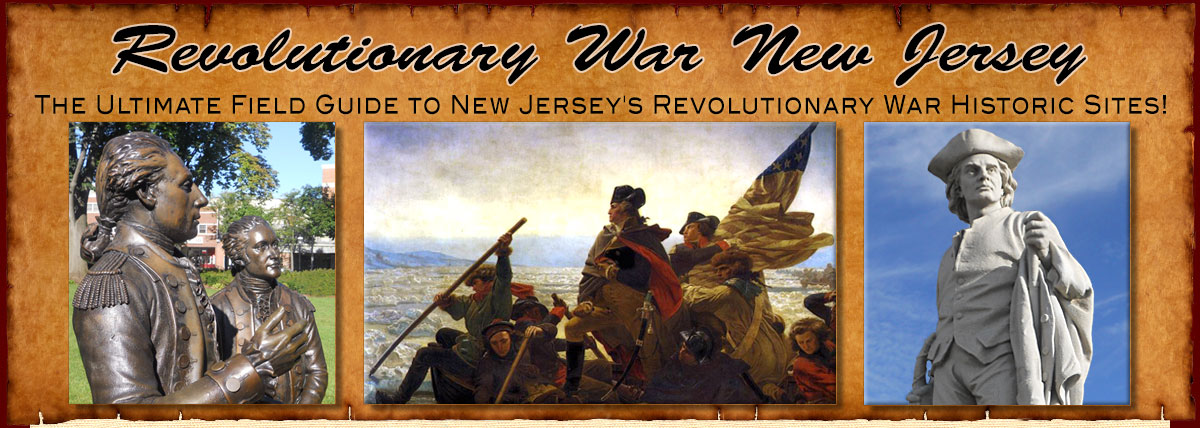

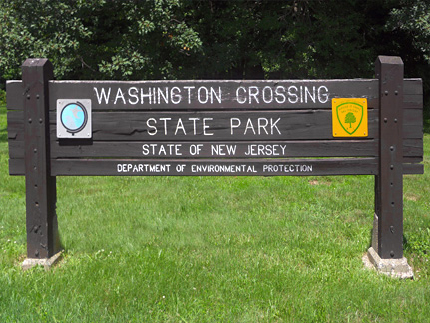
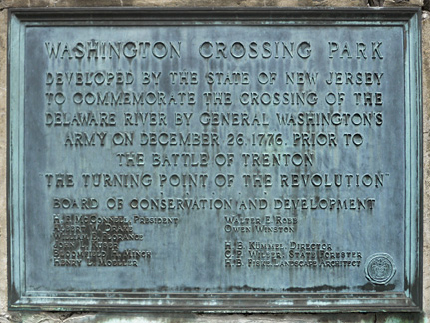
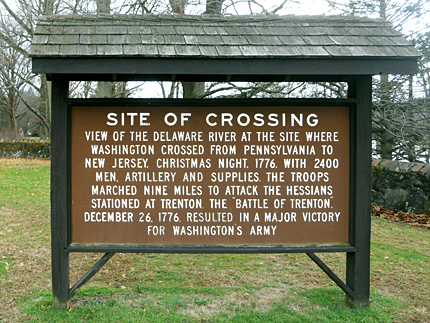
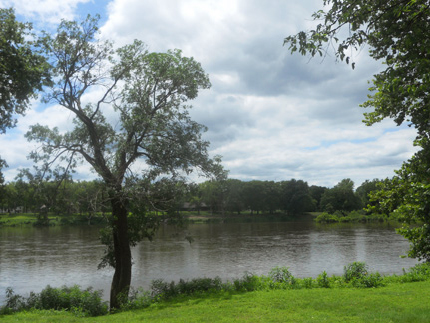
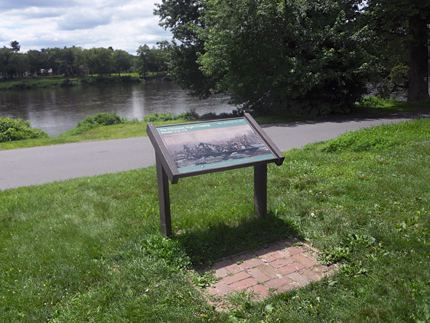
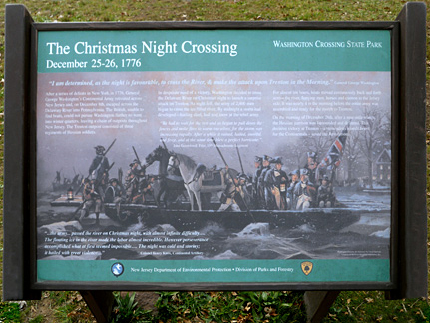
Washington Crossing State Park
355 Washington Crossing-Pennington Rd
Map / Directions to Washington Crossing State Park
For more information about visiting the Park, including current hours and admission, see the Washington Crossing State Park Website
The Crossing of the Delaware River
Christmas Night, 1776
1776 was a tumultuous year for the Americans. While July 4 had seen the adoption of the Declaration of Independence, the second half of the year saw a series of defeats in New York for General George Washington and his army. Then, on the night of November 19-20, British and Hessian troops under the command of General Cornwallis crossed the Hudson River from New York City to invade New Jersey, causing the American troops to abandon their encampment at Fort Lee and begin a twelve-day retreat across New Jersey. On December 2 the retreating American troops arrived in Trenton, where they spent five days moving all the troops and supplies across the Delaware River into Pennsylvania.
Washington ordered the collection and confiscation of all of the boats for miles up and down the river, which prevented the British forces from following them into Pennsylvania. [1] Unable to pursue the American troops across the river, British troops took up winter quarters in various locations in New Jersey, including Princeton and New Brunswick. A garrison of Hessian troops was left to occupy Trenton. (Hessians were German mercenary soldiers who had been hired by the British to fight on their side in the Revolutionary War. )
Although the river offered George Washington and his army temporary safety, this was a desperate time for them, what Thomas Paine would describe as "These are the times that try men's souls." [2] The soldiers were demoralized from the defeats and retreats of the previous months. The army's size had diminished greatly over the previous half year. To make matters worse, the enlistments of many of the men were due to expire at the end of the year, which would cause the loss of much of the rest of the army. The country's faith in the army, and in Washington as its commander-in-chief, was at an all time low. Under these circumstances, General Washington decided to attempt an extremely bold and risky move - to cross the Delaware River back into New Jersey to make a surprise attack on the Hessian garrison at Trenton..
The plan was to cross the river on Christmas night, and then march nine miles to Trenton and make the attack before the sunrise, to maintain the element of surprise. However, a very bad winter storm began that night, and it took almost ten hours to move all of the men, horses and cannon across the river in boats. American General Henry Knox described the difficulties of the crossing: "The floating ice in the river made the labor almost incredible. However, perseverance accomplished what at first seemed impossible." [3]
It took until almost 4 a.m. for everyone to make it across the river, hours behind the plan's schedule, and the army still had the nine-mile march to Trenton ahead of them. The weather made the march to Trenton a difficult one, and they did not reach Trenton to attack until 8 a.m., well after sunrise. However, Washington's luck had held out, and they still surprised the Hessians and were victorious at what is known as the first Battle of Trenton. Washington's army marched back and then recrossed the Delaware River into Pennsylvania with about 900 Hessian prisoners.
The victory at the first Battle of Trenton boosted the sagging morale of the army and the country. Faith in Washington's leadership revived. With a renewed confidence, Washington's army would make another crossing into New Jersey several days later, resulting in the second Battle of Trenton, and then another important victory at Princeton. They would then take up quarters in Morristown for the rest of the winter. These events which occurred in New Jersey during this time changed the course of the war, and ultimately the course of history. [4]
Note that there were two other crossings attempted that Christmas night as part of the plan. These involved smaller groups of soldiers crossing at different locations on the Delaware River. Neither of those two other groups were able to successfully cross the Delaware River, and the attack on Trenton was carried on without them. See the Beverly page of this website for more information.
Washington Crossing State Park
Washington Crossing Park provides a great way to learn about the crossing at the location where it occurred. Markers, monuments and exhibits throughout the park and its Visitors' Center Museum provide visitors with a way to better understand the events that occurred here.
Note that there is another park on the Pennsylvania side of the Delaware River. It is called Washington Crossing Historic Park and has its own attractions. The driving bridge that spans the Delaware River here has a walking path on the side of it, so when you visit the New Jersey park, you can walk across the river to the Pennsylvania side.
For more information about the Pennsylvania park, see the parks website www.washingtoncrossingpark.org.
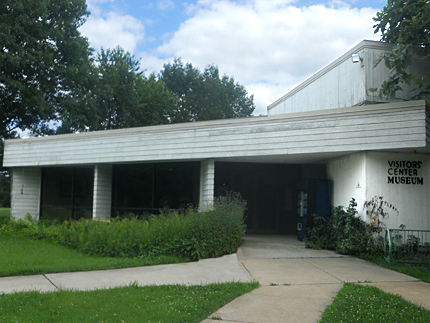
Visitors' Center Museum
The park's Visitors' Center Museum features exhibits which provide a background to understand the events that occurred here in 1776.
The Visitors' Center's main attraction is the Swan Historical Foundation Collection, which includes hundreds of items from the Revolutionary War era. On display are paintings, engravings, maps, weapons, ammunition, coins and other artifacts.
There is also a small theater inside which runs a short film, "Ten Crucial Days - The Road to Liberty," throughout the day. The film focuses on the period of December 25, 1776 - January 3, 1777, which included the Crossing of the Delaware, the first and second Battles of Trenton, and the Battle of Princeton.
The Washington Crossing State Park on the Pennsylvania side of the Delaware River has its own Visitors' Center. It features a full-size copy of Emanuel Leutze's famous Washington Crossing the Delaware painting.

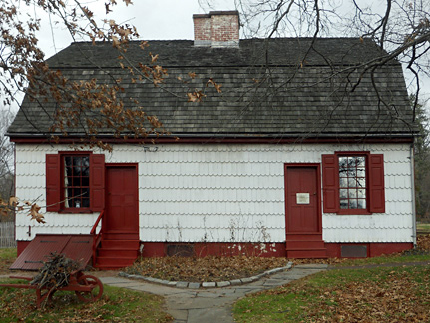
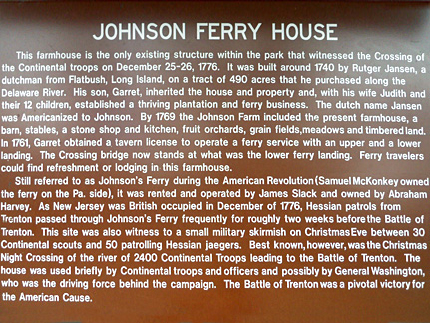
The Johnson Ferry House is the only building on the park grounds that was here at the time of Washington's Crossing. [5] A sign near the house (shown above right) explains the building's history and the role it played in the Revolutionary War events of December 1776.


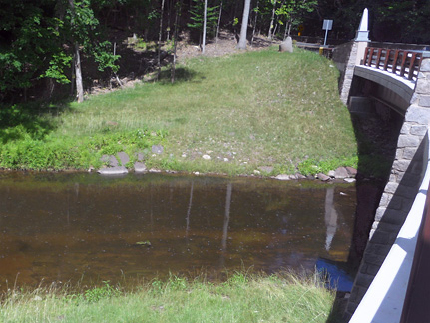
After their historic Christmas night crossing of the Delaware River, General George Washington's army headed towards Trenton to attack the Hessian garrison there.
They moved about a mile-and-a-half inland, and then turned right onto Bear Tavern Road. Moving about one-and-a-quarter miles down Bear Tavern Road, they reached Jacobs Creek around 6 a.m. There was no bridge over Jacobs Creek, and the army was delayed by having to get the men and cannon across.
After successfully crossing Jacobs Creek, Washington's troops continued to march down Bear Tavern Road in what is now Ewing. (See the Ewing page for more details.)
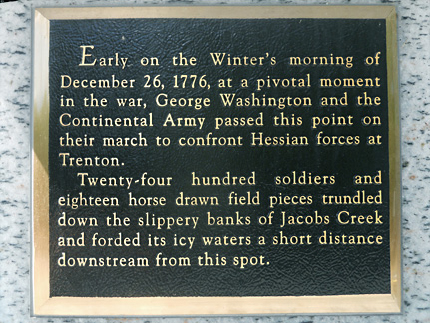
The Markers at Jacobs Creek
Jacobs Creek is today marked by a number of signs and plaques which explain the events that occurred here in December 1776:
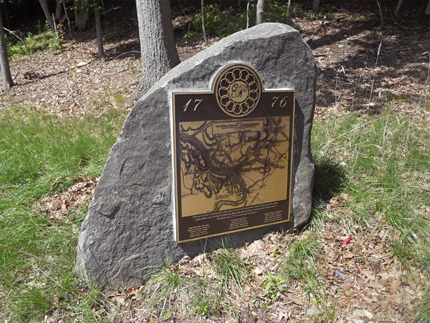
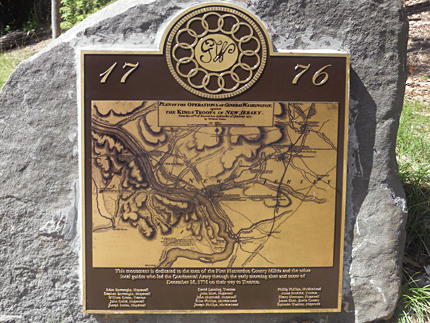
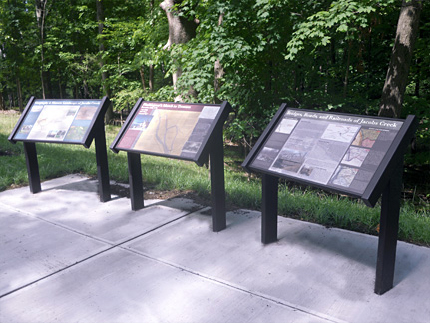
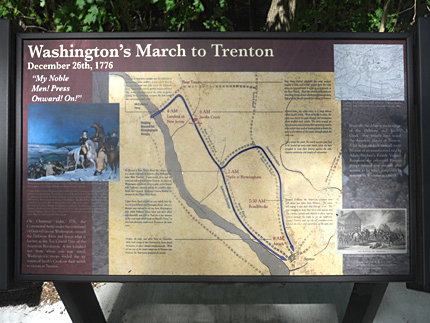

1. ^ For more information and accompanying source notes about some of the New Jersey men involved with the collection of the boats, see:
• The Rosemont Cemetery (Gravesite of Captain Daniel Bray) entry on the Rosemont page of this website.
• The Captain Jacob Gearhart House entry on the Franklin Township page of this website.
• The Jones Tavern entry on the Annandale page of this website2. ^ "These are the times that try men's souls" is the opening sentence of Thomas Paine's The Crisis.
3. ^ General Henry Knox's letter to his wife Lucy, December 28, 1776, reprinted in:
Francis S. Drake, Life and Correspondence of Henry Knox: Major-General in the American Revolutionary Army (Boston: Samuel G. Drake, 1873) page 36
Available to be read at the Internet Archive here4. ^ Information for this entry was drawn from a number of sources, including:
• David Hackett Fischer, Washington's Crossing (New York: Oxford University Press, 2004)
• William S. Stryker The Battles of Trenton and Princeton (Boston and New York: Houghton Mifflin and Company, 1898)
• Visits to Washington Crossing State park and it's Visitors' Center Museum
For more about the march to Trenton, see the Ewing page of this website.
For more about the first and second Battles of Trenton, see the Trenton page of this website.
For more about the Battle of Princeton, see the Princeton page of this website.
For more about the 1777 Morristown winter encampment, see the Morristown page of this website.5. ^ Information about the Johnson Ferry House drawn from the Washington Crossing State Park historic sign that stands by the house.
6. ^ The map shown on the boulder monument, Plan of the Operations of General Washington, Against the Kings troops in New Jersey from the 26th of December, 1776 to the 3d. January 1777, was created in 1777 by English cartographer William Faden.
It can be seen on the Library of Congress website here.
Note that Faden's map was made with the information available to him at the time, and contains information that is now considered incorrect. The 1777 map indicates that Washington split his army into two columns right after reaching the New Jersey side of the Delaware River. Actually Washington split his army near the site of Historic Crossroad Park in Ewing, after having marched about two-and-a-half miles past Jacobs Creek on Bear Tavern Road.